
1. For more than a year, we have been living and creating in difficult conditions. In this situation, how difficult is it to develop the cultural scene and create new quality projects?
2. How can we increase investments and revenues in culture in the current conditions?
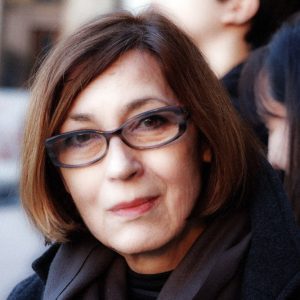
We have intensified the production of virtual content
1. Despite a significantly reduced number of visitors due to the pandemic, the National Museum in Belgrade has managed to use the situation to find new ways of communicating and intensifying the production of virtual content. Our primary goal was to remain present in the lives of our visitors and admirers of cultural heritage immediately after the outbreak of the pandemic and the closure of cultural institutions by sharing interesting and valuable content to make everyday life more meaningful and enjoyable.
Over the past year, we have recorded and broadcast more than 100 videos and put together a total of 6 virtual exhibitions, which has resulted in a remarkable increase in the number of our followers, specifically a 65% increase on Instagram. When it comes to the offer for the very important population of students, who are used to coming in organized visits, we have created the programme called ‘The National Museum in Class’, which enables students and teachers to visit the National Museum via the Zoom application to communicate with the curators. Although some of our exhibitions were stopped or postponed due to the pandemic, we staged three thematic exhibitions in the exhibition space of the National Museum and had almost a third of the exhibits in the ‘Vlaho Bukovac – Painting of Imperishable Beauty’ exhibition in the SANU Gallery.
2. Higher investments in culture could be achieved through forging strategic partnerships between the private and public sectors and pooling resources to improve the quality of life of all members of our society. Finding common ground and interest in pairing IT, marketing, production, design and other companies with cultural institutions, would ensure the creation of even better and more meaningful content. In terms of revenues directed to their own capacities, museums could increase them in the usual ways and also by providing specialist services that result from expertise, knowledge and skills.
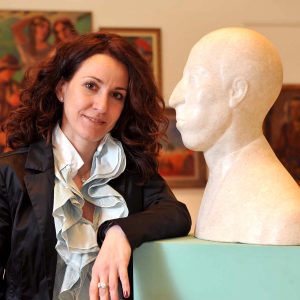
We turned a crisis into an opportunity
1. It is not difficult but challenging because, in order to work successfully in the “new normal”, we need to transform our programmes. We, at the Matica Srpska Gallery, have collectively decided that the coronavirus would not stop us, but prompt us to change. Believing that the museum, with the implementation of all prescribed measures, can become the safest place for consuming culture, we adapted to the moment by introducing new programmes. We have transformed our children’s programmes into family ones and created an opportunity for parents to spend quality and fun time in the gallery with their children. We renamed the classic interpretations into the ‘Eye to Eye with Art’ programme and organized guided tours for up to five visitors at one time. We opened the ‘Indulge in Art’ room and provided our audience with a unique experience of enjoying works of art in a fitting atmosphere. At the same time, we launched a series of online programmes and activated virtual tours and interactive programmes for people who decided to stay at home. In other words, we turned a crisis into an opportunity and added a new quality to our activities.
2. By fostering creativity and innovation and by providing services to the audiences that they need in these changed circumstances that make their lives more beautiful. The Matica Srpska Gallery has launched a whole series of new programmes, published a large number of various museum editions, devised new lecturing formats and new type of communication with the audience, and finally launched new series of souvenirs featuring the artwork from our collection. All this has resulted in a very strong media presence, which makes it easier for us to find a model to increase investments, because positive energy always opens doors to potential financiers and partners.
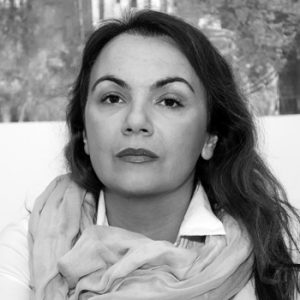
We are trying to be creative
1. The whole unpleasant situation imposed a new perspective and I do not mean only the digital presentation of museum content but the entire atmosphere in which we present art to the public. Art has a place in society which has been validated countless times throughout history. With programmes that are not pretentious and are well thought out both in terms of content and aesthetics, we have adapted our content to the circumstances. An individual must be resourceful and to be resourceful means to be creative. It is a great success to achieve the maximum with the minimum means available and for art, which has been suffering since ancient times to be victorious again and survive. I think we have succeeded in doing that.
2. At the very beginning of the epidemic, investments increased although it seemed impossible. Decision-makers have recognized the possibilities and potential that culture has even in this difficult situation. Although I am inclined to claim that cultural programmes and museum content must be self-sustaining to a great extent, I’m referring here to the time when the state authorities reacted. They gave their support to art and artists because they recognized how important art is for society’s culture and identity. The museum has been prudently focusing on spending its own revenue on smaller, more dynamic exhibitions and on creating an atmosphere in which museums, at least the institutions operating under the Museum of the City of Belgrade, will be a gathering place. In the current period, art must be encouraging and remind all of us how special and creative we all are, how important it is to persevere in everything, and that art, in addition to the basic needs of life, is a medicine for the soul.
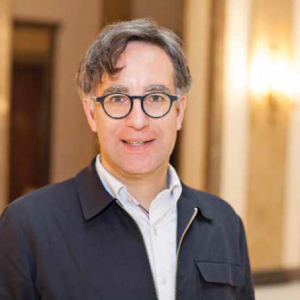
Additional state aid would be of crucial importance
1. It’s incomprehensibly difficult. Regular forms of production and distribution must constantly adapt to new circumstances, which we often cannot even imagine, because all of us together, all of humanity, have encountered an experience that even the oldest of us have never had. Theatre plays are made with long recesses, and when the rehearsal process is finally over, they are “locked-in”, waiting for the most favourable circumstances to have a premiere and to be further ‘exploited’. The art form must, more or less, adapt to the new conditions. For instance, in performing arts, projects with fewer performers and not many words are “more sustainable” from the point of view of anti-pandemic measures, while, for example, elaborate operas and musicals carry the greatest risks and are most difficult to stage. The good thing is that artists are looking for creative forms in order to overcome these objective challenges. I recently watched “The Cherry Orchard” (“Višnjik“) by Croatian director Bobo Jelčić, based on the eponymous play by Chekhov, which was very cleverly conceptually adapted to the form of an online Zoom conference.
2. Even in countries that do not have state subsidies for culture, such as Great Britain, it is clear that culture, and especially contemporary, will find it difficult to survive the pandemic-induced crisis without significant help in the shape of state financial aid. Many segments of contemporary art, especially “the living art”, all kinds of instrumental and vocal music, theatre, opera, ballet, contemporary dance, etc., are human activities that have been most at risk during the pandemic. I think that additional state aid would be of crucial importance in our country as well. In other to have this kind of support, but also to motivate sponsors and philanthropic organizations and individuals, the most important thing in the society is to develop awareness, primarily through the media, that culture and art are not “non-essential activities”, but rather the opposite. The experience in the past year demonstrated that the pandemic and related long-term quarantines and other forms of self-isolation were not only a challenge for people’s physical health and the economy but also our mental health. I don’t think there is a single person on the planet who, in the age of self-isolation, did not maintain their mental health by practising or consuming some kind of art. Such content did not come out of nowhere – someone had to create it and that, among other things, costs money.
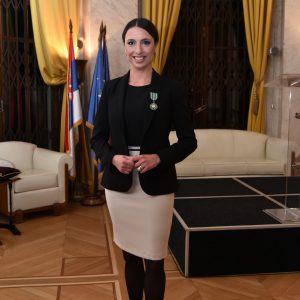
We always swam the only way we could
1. This situation is terrible for the entire European and global cultural scene, especially if we are talking about performing arts and especially when it comes to ballet and contemporary dance. In many countries, artists have been forced to change their professions and relocate from the cities in which they had been creating and performing until last year, in order to be able to earn basic livelihood. Many dance troupes will not survive the virus, many private theatres will disappear, just like many events will too. In environments where art was not part of tradition or a regular habit, there is a justified fear that the audience will be lost, i.e. that the habit of frequenting theatres, museums and galleries will disappear.
2. I really don’t how to answer that question, because it is evident that revenues cannot increase in a situation where sponsors have abandoned all cultural events and initiatives, and theatres are doomed to work at a quarter of their full capacity. At the same time, in Serbia, we have been mum about the fact that ski resorts are packed full of guests, that parties are taking place in Belgrade and that shopping malls are full of shoppers. Art is simply not important to us. As far as investments are concerned, there has never been any serious plan. We always swam the only way we could.